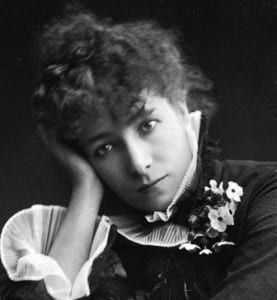“LUNGS HAUNT OUR PAST TRANSGRESSIONS AND ACT AS A SOCIAL, ECONOMICAL AND ENVIRONMENTAL ‘BLACK BOX’ TO LIFE. HOW DOES THE HAUNTED BODY AFFECT A SPECTATOR WHEN POSED WITH A MULTIPLICITY OF PREVIOUS EXPERIENCES FROM A PERFORMER?”
This entry is an almost ‘dear diary’ process through a section of my essay question development and some of the ideas that were fed into my essay. This was constantly fluctuating and adjusting with new revelations and research. I have also entered my total works cited at the bottom for a conclusive list of sources I touched upon within my work.
DEAR ESSAY
I would also use The Human Ear by Alexandra Wood and Lungs by Duncan Macmillan as there was a shared space, time and performers, a theoretical ‘clean room’. I will also touch on Macmillan’s Every Brilliant Thing due to the creative colouring from the performer in the creative process.
If this is a path I choose to go down, I would have to first define a few terms:
- ‘Haunted Body’ – Whose body? Is this primarily the actors or could/should it include the haunted body of the spectator as well? Would that fit into the theory or is that an unnecessary stretch…
- ‘Multiplicity of previous experiences’ – What defines the experience? Time constraint? is there a minimum number of experiences before ‘ghosting’ can commit? How vivid must the experience be? Must it be positive or could it be negative?
- ‘Affect’ in a positive or negative? Does it matter as long as the experience takes place? This may depend on the route I chose to take with my argument.
- Through looking at the spectator I would like to touch on the haunted nature of genre and the space of the theatre. We are ghosted by opinions as well as our own experiences. How did the roundabout/riverhead theatre space give way to this?
- definition of the spectator, is this the passive act of watching or the active move of allowing for a shared and individual experience?
I would like to pose an argument within the structure of the essay to allow for a more formal and linear process:
- The ghosting experience is a negative and derives a poor final experience for the spectator, marred by previous performances.
- The ghosting is a positive experience, it allows for a more layered and detailed relationship between actor and spectator which can only serve to better connect audience to actor. This also generates a more personal experience for each individual as they bring their personal previous experiences to the performance.
 IDEAS FROM COLETTE CONROY’S THEATRE & THE BODY
IDEAS FROM COLETTE CONROY’S THEATRE & THE BODY
Look into Bernhardt and her book The Art of Theatre. Theorise how the experience of the spectator can differ post-amputation. Similar to viewing a performance on the basis of being a celebrity?
The ‘ghosting’ or ‘exorcism’ of spectator wants on the performer shown through the character pains, suffering or sexual arousal. A performer we do not like, their character is punished on stage and we take enjoyment through the intertextual reading that the actor is indiscriminate in the perception of this suffering or pain. (Conroy, 2010, 4)

Brings up the connection between the performer’s body and the audience’s body. This can be seen as a reflective process in a sense of haves and have nots. Talent or absurdity. The audience relies on their own physical capability as a lookout to what others, what performers are physically capable of.
Mentions the possibility of an “ideal spectator”. Does this exist? Conroy states this is purely an abstract idea and concept.
Separate the difference of the physical use of the body as a tool of communication, the now, the present, the performance in motion and the reflective experience which stands in difference or plurality to the communicative. The second is reflective in a sense of a comparative structure to deem the contrast.
CLARITY: TWO DISTINCT CHOICES TO DISCUSS…
- The use of the physical body in the moment of performance to deem genre, ‘correctness’ “there is an ideal body for an actor – a neutral medium of communication that can be trained and that can simply stand for a character without distracting the audience’s attention” (Conroy, 2010, 6)
- And despite 1. When the ideal body and training is not enough and the ‘ideal body’ is revered with celebrity status and the previous experiences of the body transcend into the current performance.
The shared semiotics between Human Ear and Lungs, the differences, how this feeds into the human experience of theatre and how these motives and scenographic choices feed into the haunted body of the performer.
Discuss the problem with the terminology spectator, to spectate is a passive decision whilst being an audience member you take on a role of your own. You have a place and role to play. How becoming a part of the event temporarily adjusts your involvement, how the multitude of bodies on stage and in the audience are never the same, never reacting the same way, reacting to weather, time, day of the week, and how this singular experience can never be relived in exactly the fame format as the first and only time. There can be adjustments to previous experiences but never a total reciprocation
Phenomenology
Theatre audiences – Reception theory – Audience as one or as a group – Scenographic experience

“I’ll take a book of the shelf, any book and you’ll have turned down the pages and underlined things.Put stars in the margins. And I stare at the sentence you’ve highlighted. I’ll reread the paragraph. I’ll think what has she seen that I can’t see? What is it that I don’t understand?” (Macmillian, 2013, 65)
HOW ABOUT THIS:
Argue that the shared ghosting of an actor as a spectator can be mirrored in the actor to their perception of a ghosted ‘spectator’. Show how through shared theatrical experience leading up to performance and through the show into the fall off an catharsis, the spectator, a part of the performance, plays a part in ghosting for the actor as the actor does for the spectator.
SO! Looking at:
Ghosting
Spectatorship
The linear passage of experience and similarities between spectator and actor in this respect
The ghosting experience for the spectator
The mirrored ghosting experience for the actor.
Primary text is Carlson’s The Haunted Stage. Using elements of When we see Horses and Postdramatic Theatre to follow through.
A impersonates B whilst C looks on. (Eric Bentley) STARTING POINT! Passing on into Bernharnt and Theatre & Body to bring in the element of ghosting from actor to audience. Relate to Dan Reballato article with David Tennant. Passing over to the audience, we look into the similarities of perceptions between audience and actor, slipping seamlessly over into the perception of the actor and how, as spectators to their own altered performance, they have the same ghosting perceptions of the spectator for a warped and heightened perspective.
How is the actor ghosted? By the space, time, actors on stage, props, lighting, all scenographic elements. How this will degenerate over time as the multiplicity of experiences start to alter their previous perception of the experience, repitition. The changing force in this is that of the audience, the spectator: C. C as a ghosting element to the actor opens up avenues such as:
- Actors perception of audience ‘type’. These can differ from ‘fractured’ ‘giving’ ‘loving’ ‘distrustful’ ‘hostile’ as well as many more.
- How this is read by the actors
- How this impacts on the performance
- How, after experience, these types are built into the actor who on certain actions within the performance, gauge the type and will, consciously or subconsciously play to the type, affecting performance through ghosting.
AMENDMENT TO ESSAY QUESTION
Lungs haunt our past transgressions and act as a social, economical and environmental ‘black box’ to life. Using a comparison between Lungs and The Human Ear, how does the haunted body affect the spectator when posed with a multiplicity of previous experiences from a performer. How, in turn, does the performer relay their own ghosting mid-performance?
I’m going to roll with this and see what happens…
WORKS CITED
Abromovic, M. (2010) Theatre & The Body. Basingstoke: Palgrave Macmillan
Bennett, S. (1997) Theatre Audiences. Routledge .
Bentley, E 1965, The Life Of The Drama, London: Methuen
Blau, H. (1990) The Audience. Baltimore: The John Hopkins University Press.
Brecht, B. (1965) The Messingkauf Dialogues. Methuen Co & Ltd
Carlson, M. (2001) The Haunted Stage. United States of America: The University of Michigan Press.
Handke, P, Roloff, M, & Kuhn, T (1997) Plays: 1 : Offending The Audience, Self-Accusation, Kaspar, My Foot My Tutor, The Ride Across Lake Constance, They Are Dying Out. London: Methuen Drama.
Leach, R. (2008) Theatre Studies: The Basics. London: Routledge.
Macmillan, D 2011, Lungs, London: Oberon Books Ltd
Rayner, A. (2006) Ghosts. Minneapolis: University of Minnesota Press.
Rebellato, D. (2009) ‘When We Talk of Horses: Or, what do we see when we see a play?’. Performance Research, 14 (1) 14-26.
Roach, J. (1996) Cities of the Dead. New York: Colombia University Press
Shakespeare, W, & Jenkins, H, (1996) Hamlet, Nelson


